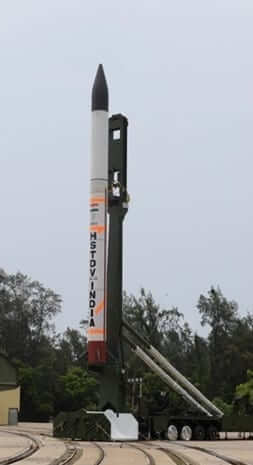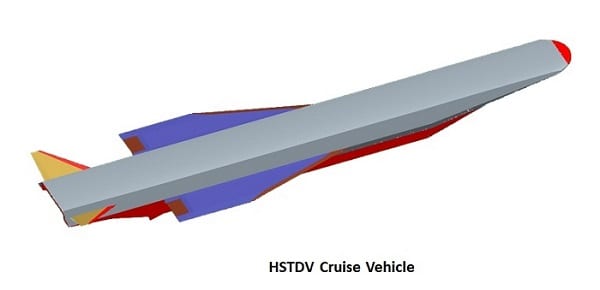India has successfully flight-tested hypersonic technology that will pave the way towards developing hypersonic missiles that will travel at six times the speed of sound.

With this successful demonstration, the country enters an elite club to become a member of the hypersonic regime. This is a step towards the manufacture of advanced Hypersonic Vehicles. India became the fourth country after the United States, Russia and China to test this technology.
The Defence Research and Development Organisation (DRDO) successfully demonstrated the Hypersonic air-breathing scramjet technology with the flight test of Hypersonic Technology Demonstration Vehicle (HSTDV) at 11:03 am on Monday from the APJ Abdul Kalam Launch Complex at Wheeler Island, off the coast of Odisha.
READ ALSO: Indian origin scientists develop improved space batteries
On Twitter, Prime Minister Narendra Modi congratulated the Defence Research and Development Organisation (DRDO) for the successful demonstration.
Defence Minister Rajnath Singh also appreciated India’s DRDO for achieving this milestone in developing hypersonic missiles.
“The Hypersonic cruise vehicle was launched using a proven solid rocket motor, which took it to an altitude of 30 km, where the aerodynamic heat shields were separated at hypersonic Mach number,” said the DRDO in a statement.
The cruise vehicle separated from the launch vehicle and the air intake opened as planned. The hypersonic combustion sustained and the cruise vehicle continued on its desired flight path at a velocity of six times the speed of sound.
Critical functions such as fuel injection and auto ignition of scramjet have demonstrated technological maturity. The scramjet engine performed in a textbook manner.
The parameters of launch and cruise vehicle, including scramjet engine, were monitored by multiple tracking radars, electro-optical systems and Telemetry Stations.

READ ALSO: Indian researchers develop eco-friendly lithium batteries
The scramjet engine worked at high dynamic pressure and at very high temperature.
A ship was also deployed in the Bay of Bengal to monitor the performance during the cruise phase of hypersonic vehicle.
All the performance parameters have indicated a resounding success of the mission. With this successful demonstration, many critical technologies such as aerodynamic configuration for Hypersonic manoeuvers, use of scramjet propulsion for ignition and sustained combustion at hypersonic flow, thermo-structural characterisation of high temperature materials and separation mechanism at hypersonic velocities can be achieved.



